What is Foundation Water Damage?
Your home’s foundation is one of its most critical structural components. However, foundation water damage can compromise its integrity, leading to serious safety and financial concerns. This type of damage occurs when water infiltrates the foundation walls, basement walls, or concrete foundation, weakening the structural support over time.
Recognizing signs of water damage early can help prevent costly repairs and maintain your home’s stability. This guide covers the warning signs of foundation water damage, its causes, and effective solutions to protect your home.
Common Signs of Foundation Water Damage
Foundation water damage can manifest in various ways, often starting with subtle signs before escalating into major structural issues. Understanding these warning signals is crucial to preventing long-term damage and costly repairs. Below, we explore the six most common indicators of foundation water damage in detail.
1. Foundation Cracks
Cracks in the foundation are one of the most obvious and concerning signs of water damage. While small hairline cracks may seem harmless, they can widen over time as underground water exerts hydrostatic pressure on the foundation walls.
- Hairline cracks: These are thin, barely visible cracks that may form as the foundation naturally settles. While they are not always an immediate concern, they should be monitored for expansion.
- Vertical cracks: Typically caused by natural settling, but if foundation water damage is present, these cracks may grow larger due to constant water infiltration.
- Horizontal cracks: These are more serious and usually indicate excessive hydrostatic pressure from water buildup around the foundation. If left untreated, they can compromise the structural integrity of the entire home.
- Stair-step cracks: Common in brick foundations, these cracks appear in a step-like pattern and often indicate shifting due to moisture changes in the soil.
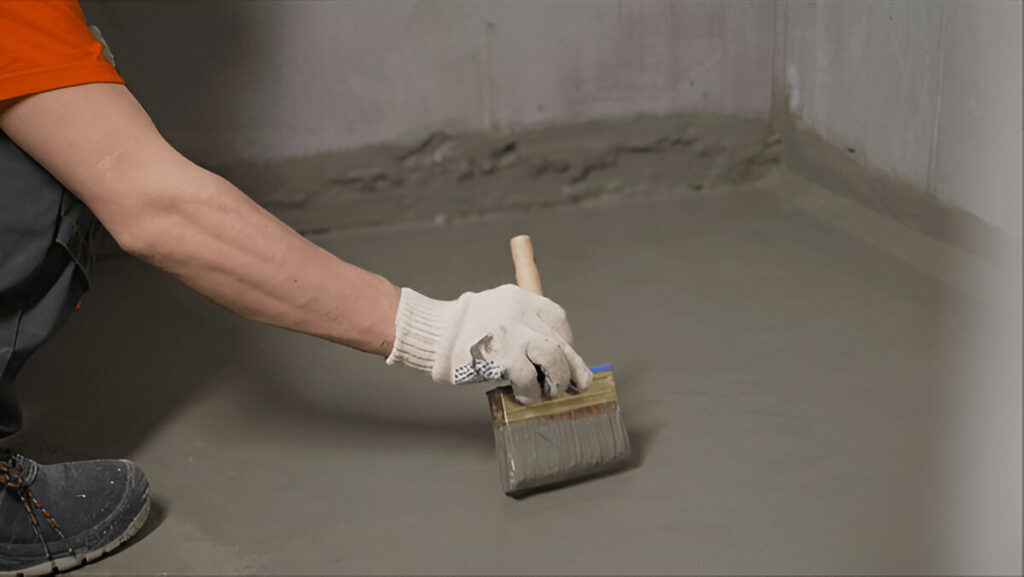
If you notice any cracks, particularly horizontal or stair-step cracks, it is essential to contact a foundation repair expert immediately to assess the extent of the damage and implement necessary reinforcements.
2. Doors and Windows Failing to Close Properly
If your doors or windows no longer close properly, it could be a sign that the foundation has shifted due to water damage. Excess moisture in the soil surrounding the home can cause the foundation to move unevenly, leading to subtle distortions in door and window frames.
- Why does this happen? As water infiltrates the soil, it creates expansion and contraction cycles. When soil expands, it exerts pressure on the foundation, causing slight movements. Over time, these shifts can result in misaligned doors and windows.
- What to look for: If you notice that previously well-fitting doors are now difficult to close, sticking, or developing gaps around their edges, it may indicate an underlying foundation issue.
- Additional signs: Gaps between window frames and walls, cracks in the corners of doorways, or visible misalignment in door hinges can all signal a shifting foundation due to water infiltration.
Addressing this issue early can prevent more severe structural movement that may require costly repairs.
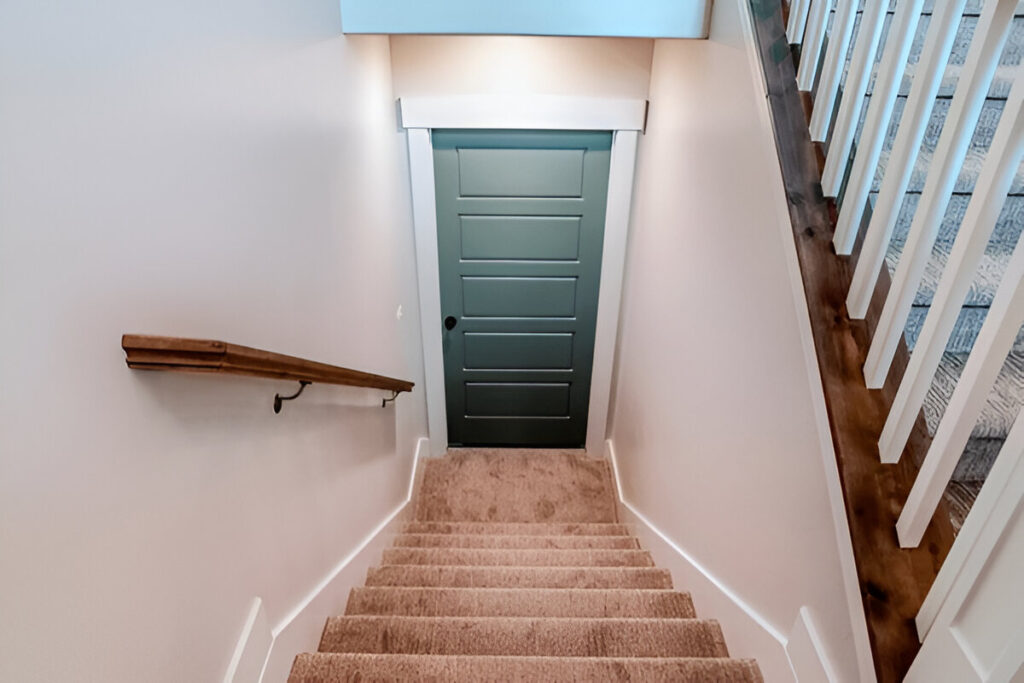
3. Basement Water Seepage
One of the most obvious signs of foundation water damage is basement water seepage. If your basement walls feel damp or you notice standing water, the foundation may have developed cracks or weak spots due to prolonged exposure to underground water.
- Common indicators:
- Puddles of water forming on the basement floor
- A persistent musty smell due to trapped moisture
- Visible damp patches or discoloration on basement walls
- Increased humidity levels in the basement
- Causes:
- Poor exterior drainage, which allows rainwater to pool around the foundation
- Clogged gutters and downspouts that direct water toward the home instead of away from it
- Improper grading of the landscape, leading to water accumulation around the foundation
If left untreated, constant basement moisture can lead to mold growth, wood rot, and further weakening of the foundation walls. Installing a sump pump or improving exterior drainage can help mitigate this issue.
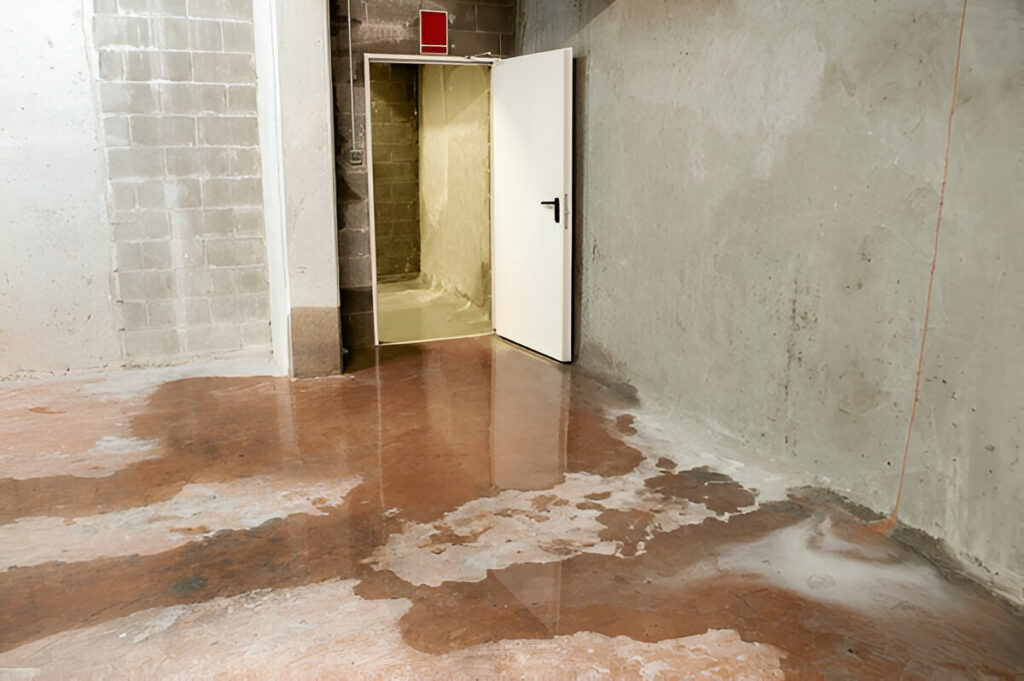
4. Mold and Mildew Growth
Mold and mildew thrive in damp environments, making their presence a strong indicator of excess moisture in your home’s foundation. Mold spores spread rapidly in humid conditions, particularly in basements and crawl spaces, and can pose serious health risks.
- How to identify mold growth:
- Black, green, or white spots appearing on basement walls or near the foundation
- A musty, damp odor that lingers in the home
- Respiratory issues or allergies worsening due to indoor air contamination
- Health concerns associated with mold:
- Chronic coughing or sneezing
- Skin irritation and rashes
- Difficulty breathing for individuals with asthma
- Why mold indicates foundation water damage:
- When water seeps into foundation walls, it creates a moist environment that promotes mold development.
- Cracks and gaps in the foundation allow humidity to rise, further accelerating mold growth.
The best way to combat mold growth caused by foundation water damage is to improve ventilation, use dehumidifiers, and waterproof the basement to prevent further moisture buildup.
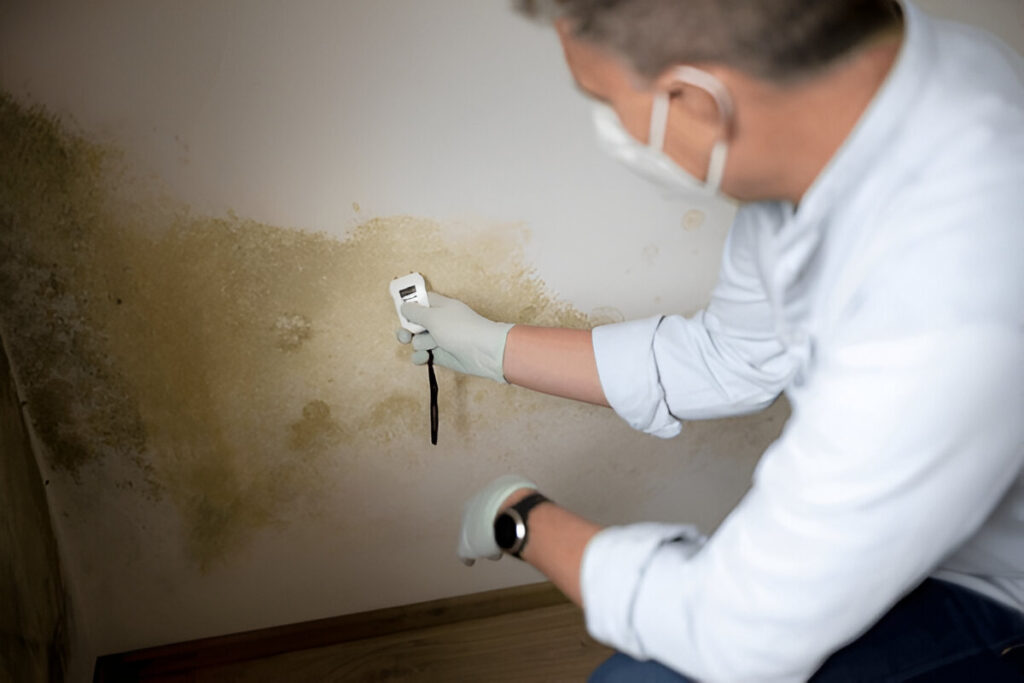
5. Sinking or Uneven Floors
If you notice that your floors feel uneven or sagging, your foundation may be shifting due to water damage. This problem is particularly common in homes with crawl spaces, where excessive moisture can lead to wood rot, weakening the support structure beneath the floor.
- Signs of an uneven foundation:
- Floors feel soft or bouncy in certain areas
- Tiles or hardwood floors start to separate or buckle
- Furniture appears slightly slanted
- Why does this happen?
- Water infiltration in the soil beneath the home leads to erosion, causing sections of the foundation to sink.
- Hydrostatic pressure from water buildup weakens the concrete, leading to instability.
- Rotting wooden joists in crawl spaces reduce the overall support strength.
If your floors are noticeably sloped or dipping, immediate foundation repair is necessary to prevent further damage and ensure structural stability.
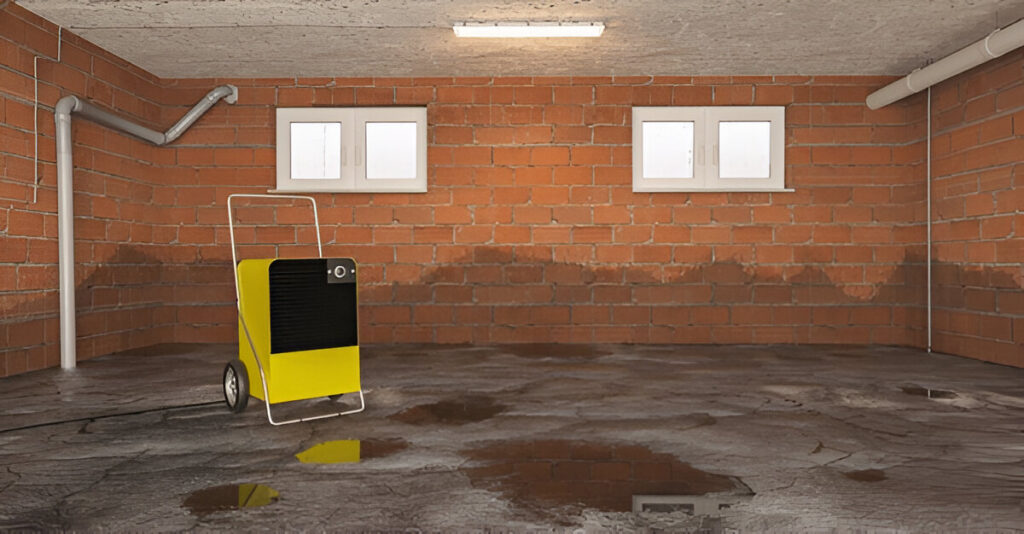
6. Efflorescence on Walls
A white, powdery substance on foundation walls (known as efflorescence) is a clear indication of water intrusion. This residue forms when water evaporates from concrete or brick surfaces, leaving behind mineral deposits.
- How to identify efflorescence:
- A chalky, white film on basement walls or concrete foundation
- Flaky, crust-like deposits accumulating near cracks or damp areas
- A gradual darkening or discoloration of the walls
- What does efflorescence indicate?
- It means that water is penetrating through the foundation walls and evaporating, leaving behind minerals.
- Over time, continuous water exposure can weaken the concrete foundation, making it more prone to cracks and leaks.
To eliminate efflorescence, homeowners should focus on:
Sealing foundation cracks to prevent water entry
Improving drainage around the home
Using waterproof coatings to protect basement walls from moisture
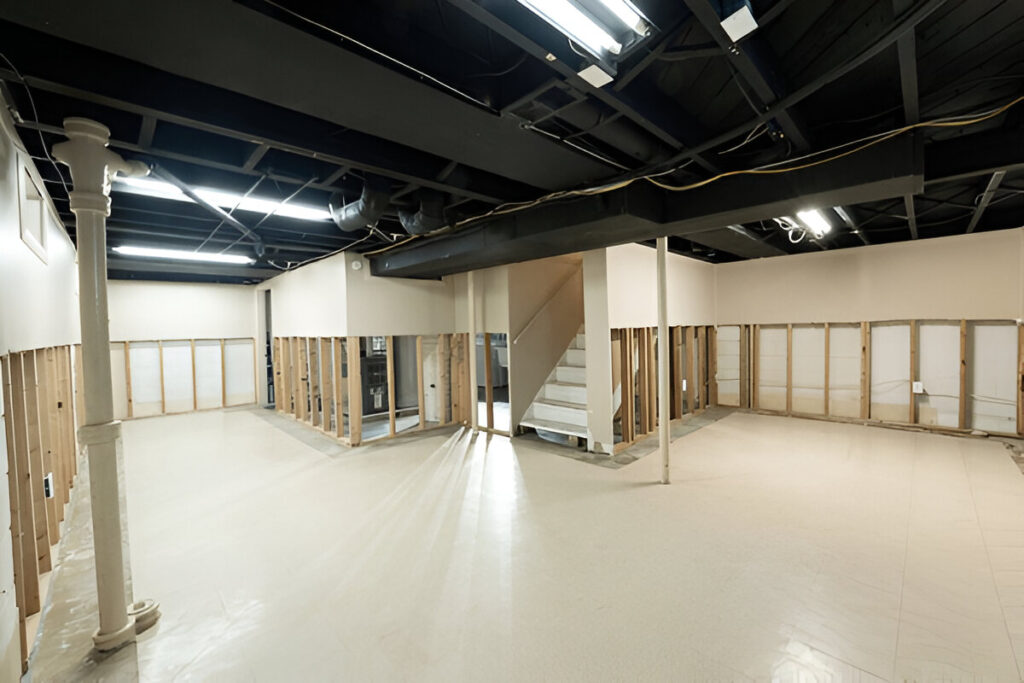
Causes of Foundation Water Damage
Understanding the causes of foundation water damage is essential for preventing long-term structural issues in your home. Water infiltration can weaken foundation walls, basement walls, and concrete foundations, leading to cracks, instability, and costly repairs. Below, we explore the primary reasons why water damage occurs and how these factors impact your home’s structural integrity.
1. Poor Drainage Around the Foundation
One of the most common causes of foundation water damage is poor drainage. When water does not drain properly away from the home, it accumulates around the foundation walls, increasing hydrostatic pressure and forcing water into the smallest cracks.
How Poor Drainage Occurs:
- Improper Grading: The soil surrounding a home should be sloped away from the foundation to prevent water accumulation. If the ground is level or sloped toward the house, rainwater pools near the foundation, increasing the risk of seepage.
- Clogged or Short Downspouts: Downspouts that do not extend far enough from the foundation can cause water to collect directly around the home, saturating the soil and compromising the foundation’s stability.
- Blocked Gutters: When gutters become clogged with leaves, debris, or ice, they can overflow, causing water to spill directly onto the foundation instead of being diverted away.
Impact on the Foundation:
- Increased Moisture Levels: Excess moisture weakens the concrete foundation, making it more susceptible to cracking.
- Soil Expansion & Contraction: Waterlogged soil expands and then contracts as it dries, leading to shifting foundations and potential settlement issues.
- Foundation Wall Cracks: Over time, water pressure can cause horizontal and stair-step cracks, which are signs of serious structural strain.
Prevention Tips:
- Ensure that gutters and downspouts direct water at least 6 feet away from the foundation.
- Adjust the grading around the home to promote proper water runoff.
- Install French drains or other exterior drainage systems to channel water safely away from the foundation.
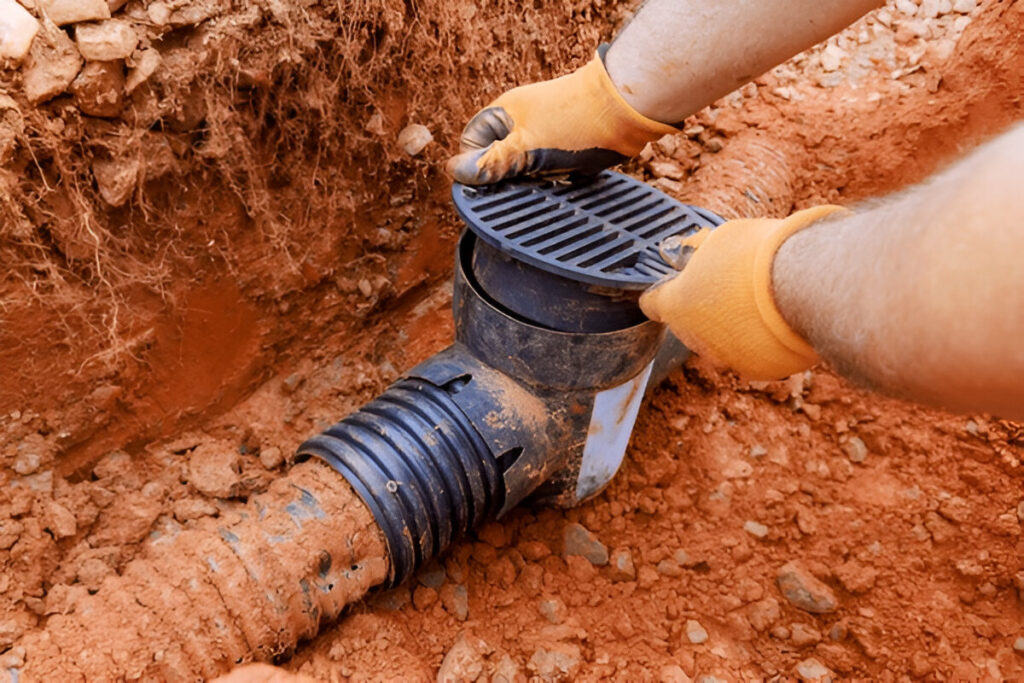
2. Heavy Rainfall or Flooding
Excessive rainfall or flooding significantly increases the risk of foundation water damage. When large amounts of water saturate the soil around the foundation, the ground struggles to absorb it, leading to water infiltration into the basement walls or crawl space.
How Heavy Rainfall Causes Damage:
- Soil Oversaturation: When the ground becomes overly saturated, it cannot hold more water, causing water to seep through cracks in the foundation walls.
- Hydrostatic Pressure Increase: The more water accumulates outside the home, the more pressure it exerts on the foundation walls, forcing moisture into the basement.
- Flooding Risks: Homes built in low-lying areas or near water sources may experience standing water around the foundation, increasing the chances of basement water seepage.
Consequences of Water Damage from Rainfall:
- Cracks in Basement Walls: Persistent water exposure weakens the structural integrity of foundation walls, leading to fractures.
- Mold Growth: A consistently damp basement provides the perfect conditions for mold and mildew to thrive, posing health risks to occupants.
- Foundation Shifting: Erosion of the soil beneath the foundation can cause parts of the home to sink or settle unevenly.
Prevention Tips:
- Install a sump pump in the basement to remove excess water during heavy rain.
- Use waterproof coatings on basement walls to prevent moisture penetration.
- Extend downspouts and gutters to channel rainwater away from the home’s perimeter.
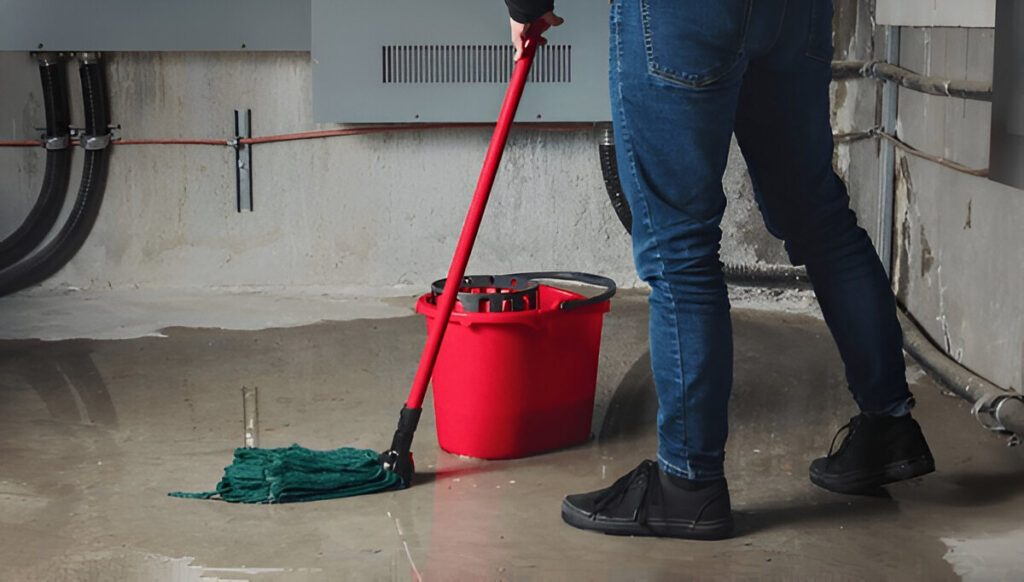
3. Plumbing Leaks Beneath the Foundation
Leaks from underground plumbing can cause severe foundation damage, as they introduce constant moisture into the soil, leading to erosion and instability.
How Plumbing Leaks Occur:
- Broken Water Pipes: Over time, aging pipes may develop cracks or leaks beneath the foundation, allowing water to escape into the soil.
- Sewer Line Leaks: Damage to the main sewer line can soften the soil and cause the foundation to shift or sink.
- Irrigation System Malfunctions: Faulty sprinklers or underground irrigation leaks can oversaturate the soil around the foundation.
Effects of Plumbing Leaks on the Foundation:
- Soil Erosion: Water leaks wash away supporting soil, causing the foundation to lose its stability.
- Increased Hydrostatic Pressure: Constant moisture exposure adds pressure to the foundation, leading to cracks and leaks.
- Uneven Foundation Settlement: As soil washes away, the foundation may begin to tilt or crack, requiring extensive repairs.
Prevention Tips:
- Schedule routine plumbing inspections to detect and repair leaks early.
- Install a water leak detection system to identify underground leaks before they cause damage.
- Monitor water pressure levels to prevent excessive strain on pipes.
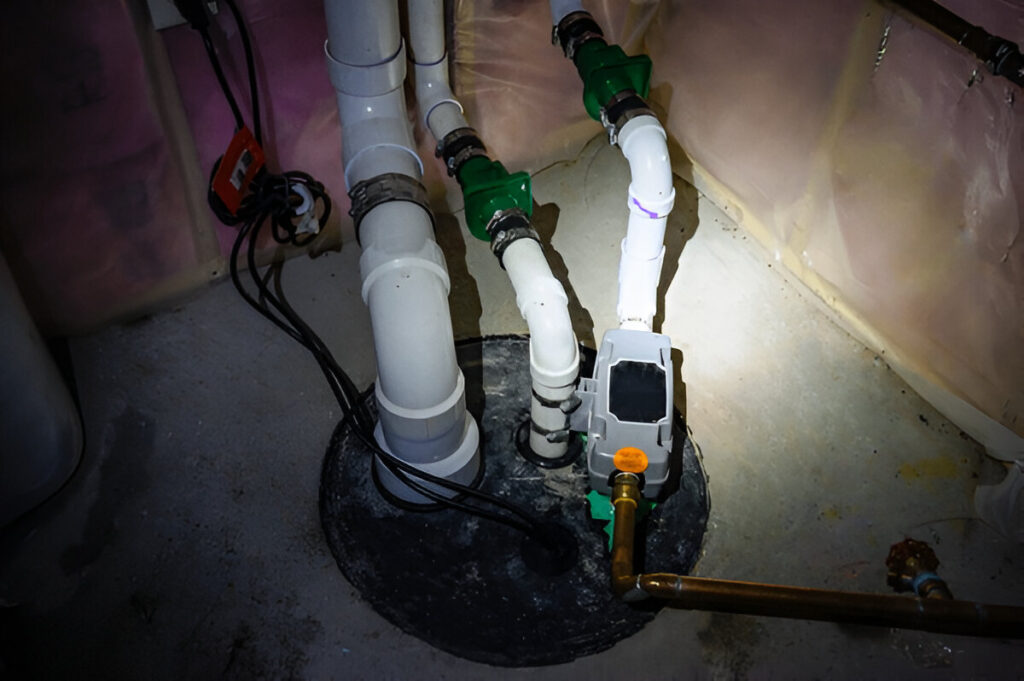
4. Expanding and Contracting Soil
The type of soil surrounding your home plays a crucial role in foundation stability. Some soils, such as clay-based soils, expand when wet and shrink when dry, creating movement in the foundation over time.
How Soil Expansion and Contraction Affects Foundations:
- Wet Conditions: When it rains, expansive soil absorbs water, increasing in volume and pushing against the foundation walls.
- Dry Conditions: During dry spells, the same soil shrinks, creating voids under the foundation, which may cause the home to settle unevenly.
- Seasonal Cycles: Repeated expansion and contraction lead to stress fractures in the foundation over time.
Long-Term Consequences:
- Cracked Concrete Foundations: The continuous movement weakens the structural integrity of the home.
- Sloping Floors & Walls: Uneven settlement can cause walls and floors to tilt, leading to costly structural repairs.
- Foundation Instability: Over time, excessive soil movement can lead to partial foundation failure, requiring professional intervention.
Prevention Tips:
- Install soil moisture control systems to regulate soil expansion.
- Use foundation piers to stabilize the home and prevent settlement.
- Apply soil stabilizers around the foundation to reduce movement.
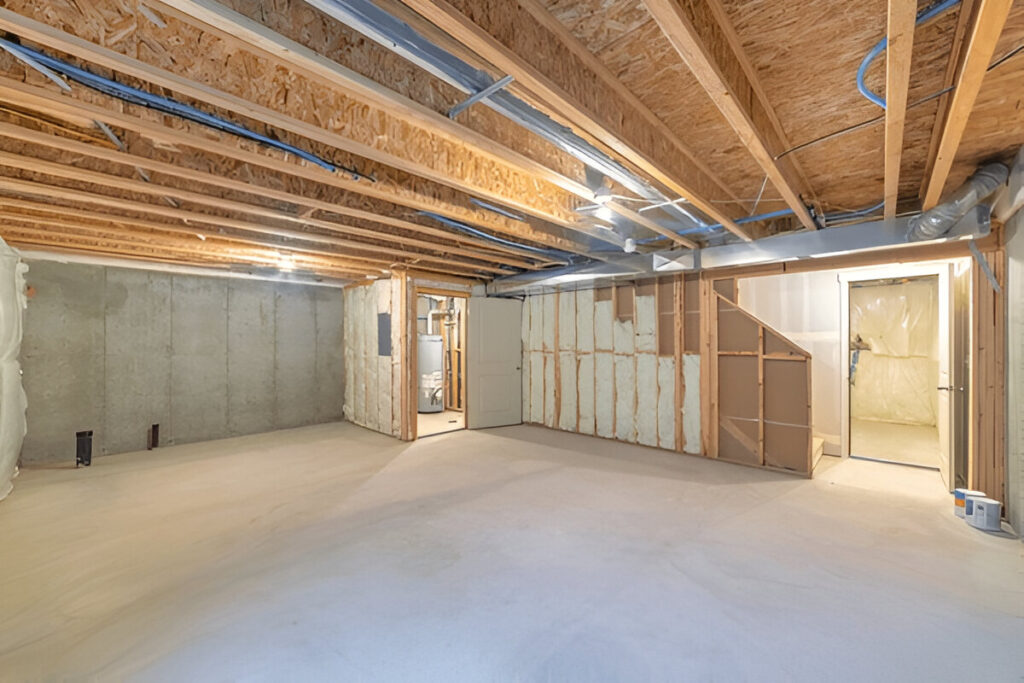
5. Clogged Gutters and Downspouts
Blocked gutters and improperly placed downspouts can contribute significantly to foundation water damage by allowing excess rainwater to accumulate near the home.
How Clogged Gutters Cause Damage:
- Water Overflow: Instead of directing water away from the home, clogged gutters spill water over the edges, saturating the soil.
- Soil Erosion: Continuous water overflow washes away the top layer of soil, exposing the foundation to moisture.
- Hydrostatic Pressure Increase: Accumulated water increases the pressure on foundation walls, leading to cracks and leaks.
Prevention Tips:
Clean gutters regularly to remove debris and prevent clogging.
Install gutter guards to reduce leaf and dirt buildup.
Ensure downspouts extend at least 6 feet away from the foundation.
By understanding these five primary causes of foundation water damage, homeowners can take preventative measures to protect their properties. Poor drainage, heavy rainfall, plumbing leaks, expanding soil, and clogged gutters all contribute to foundation instability, but proactive maintenance can help mitigate the risks.
For expert foundation waterproofing, drainage solutions, and foundation repair, contact DMW Waterproofing today and safeguard your home’s foundation for years to come!
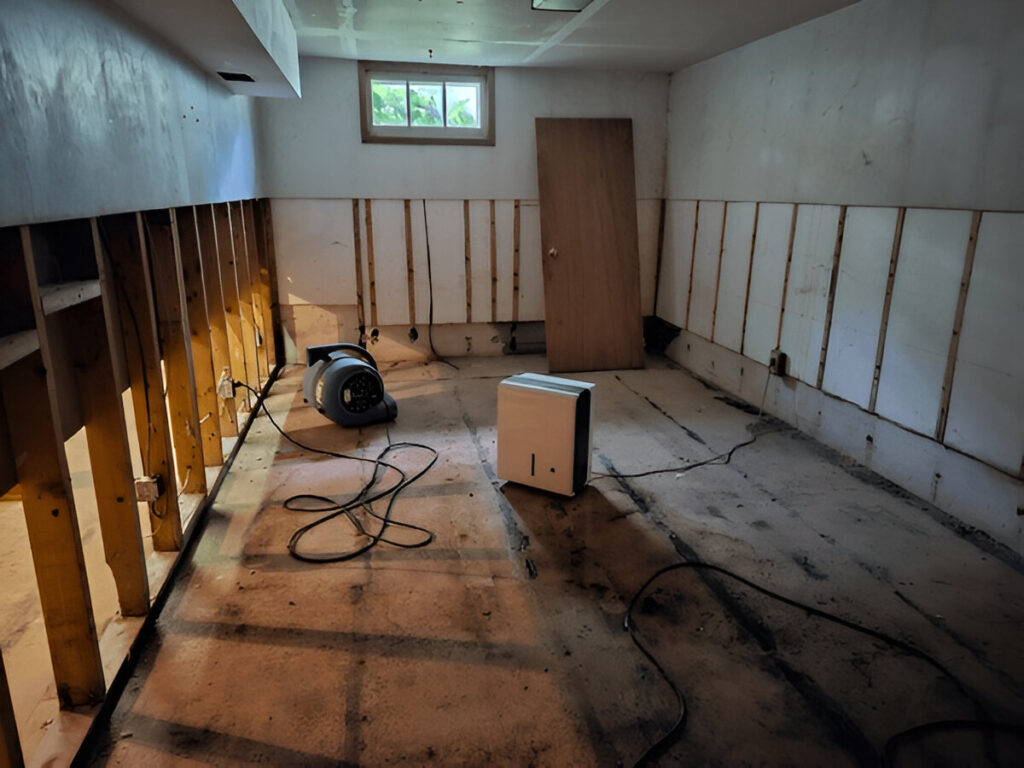
Solutions for Preventing and Repairing Foundation Water Damage
Water damage can severely compromise a home’s foundation, leading to cracks, structural instability, and costly repairs. To ensure your foundation remains strong and resistant to water infiltration, preventative and corrective measures must be implemented. Below, we discuss key solutions for preventing and repairing foundation water damage in a detailed manner.
1. Improve Drainage Around Your Home
One of the most effective ways to prevent foundation water damage is by ensuring proper drainage around your home. Poor drainage allows water to accumulate near the foundation, increasing hydrostatic pressure and leading to water infiltration into basement walls and foundation cracks.
How to Improve Drainage:
- Grade Your Landscape Correctly:
- The soil around your home should slope away from the foundation at a gradient of at least 5% (about 6 inches for every 10 feet) to direct rainwater away.
- If water tends to pool around your foundation after rainfall, regrading the soil may be necessary.
- Install a Proper Gutter System:
- Gutters are essential for channeling rainwater away from your foundation.
- Regularly clean gutters to prevent blockages that can lead to overflow.
- Install gutter extensions that carry water at least 6 feet away from the foundation.
- Use French Drains or Surface Drains:
- A French drain is a perforated pipe placed underground to collect and redirect water away from your foundation.
- Surface drains can help manage excessive runoff in areas where water pools after rain.
- Direct Downspouts Properly:
- Ensure that downspouts extend far enough from your home to prevent water from collecting near the foundation.
By maintaining proper drainage, you significantly reduce the risk of foundation cracks and water seepage.
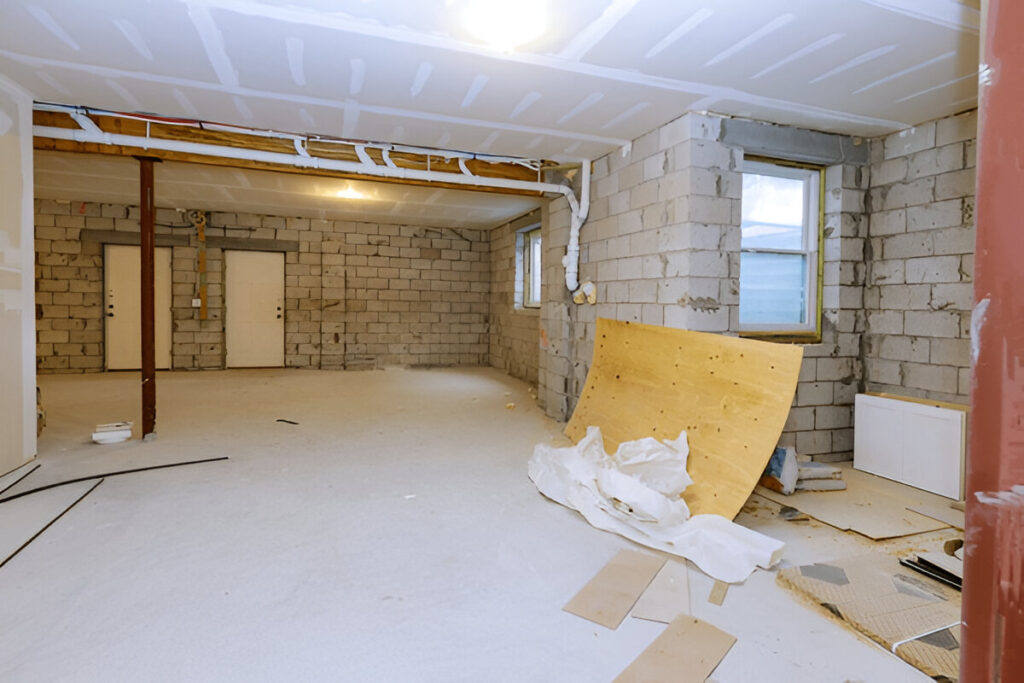
2. Install a Sump Pump
A sump pump is an essential tool for protecting your basement and foundation from water damage. It actively removes water that accumulates in a sump basin, preventing flooding and reducing hydrostatic pressure on your foundation walls.
How a Sump Pump Helps:
- Removes excess water before it infiltrates the foundation.
- Prevents basement flooding during heavy rains.
- Reduces soil saturation, which can lead to shifting foundations.
Choosing the Right Sump Pump:
- Submersible Sump Pump: Best for homes with frequent water issues, as it is more powerful and sits inside the sump basin.
- Pedestal Sump Pump: Ideal for homes with minor water accumulation issues, as it is easier to maintain but less powerful than a submersible model.
Proper Sump Pump Maintenance:
- Check the float switch regularly to ensure the pump activates when needed.
- Clean the sump pit to remove debris that could clog the pump.
- Test the backup battery system, especially in areas prone to power outages during storms.
A properly installed and maintained sump pump can provide peace of mind by keeping your basement dry and protecting your foundation from water damage.
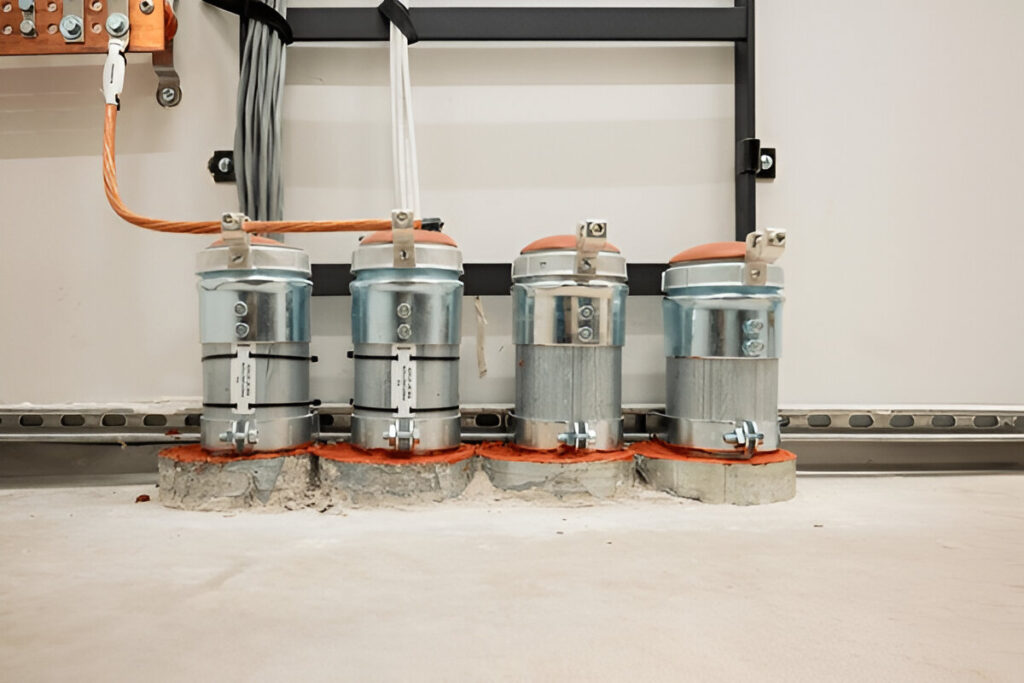
3. Seal Foundation Cracks
If your foundation already has cracks or leaks, sealing them promptly is critical to preventing further water damage and structural issues. Even small cracks can allow water infiltration, leading to mold growth, weakened foundation walls, and potential structural failure.
How to Seal Foundation Cracks Effectively:
- Use Epoxy or Polyurethane Injections:
- For minor cracks, epoxy or polyurethane injections can seal gaps and prevent moisture penetration.
- These materials expand when applied, ensuring a watertight seal.
- Apply Hydraulic Cement for Larger Cracks:
- Hydraulic cement is a quick-setting material that expands as it cures, filling cracks and preventing water entry.
- This is especially effective for horizontal cracks caused by hydrostatic pressure.
- Professional Foundation Repair for Severe Cracks:
- If the cracks exceed ¼ inch in width or continue to grow, professional intervention may be required.
- Experts may recommend carbon fiber reinforcement or piering systems to stabilize the foundation.
Sealing foundation cracks early helps maintain structural integrity and prevents escalating repair costs.
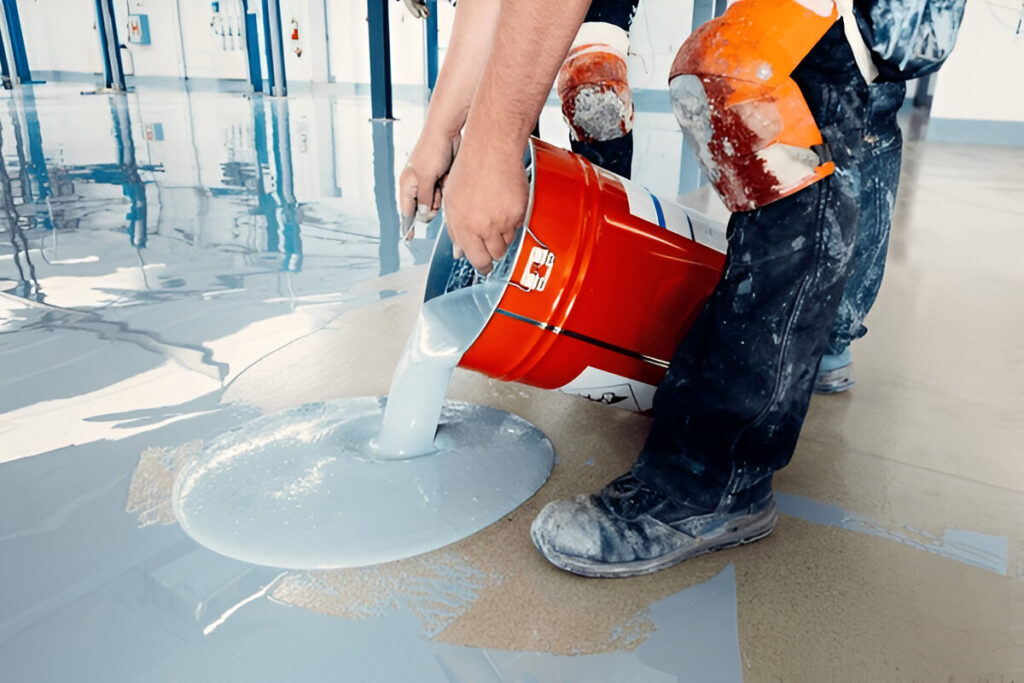
4. Waterproof the Basement
A waterproofed basement is a crucial step in preventing foundation water damage. Proper waterproofing stops moisture infiltration, reduces mold growth, and extends the lifespan of your home’s foundation.
Interior Basement Waterproofing Methods:
- Waterproof Coatings & Sealants:
- Apply waterproof paints or sealants on basement walls to create a moisture barrier.
- These coatings are best for minor dampness issues but may not be sufficient for larger leaks.
- Interior Drainage Systems:
- Installing an interior drainage system (like a weeping tile system) redirects water away from the basement to a sump pump.
- This system effectively manages groundwater seepage.
Exterior Basement Waterproofing Methods:
- Excavation and Membrane Installation:
- Professionals may excavate around the foundation and apply a waterproof membrane to block water from penetrating foundation walls.
- This is one of the most effective and long-term solutions.
- Exterior Drainage Systems:
- Installing a French drain outside the foundation can capture and divert groundwater, preventing hydrostatic pressure buildup.
Investing in basement waterproofing solutions ensures that your home remains protected from water damage year-round.
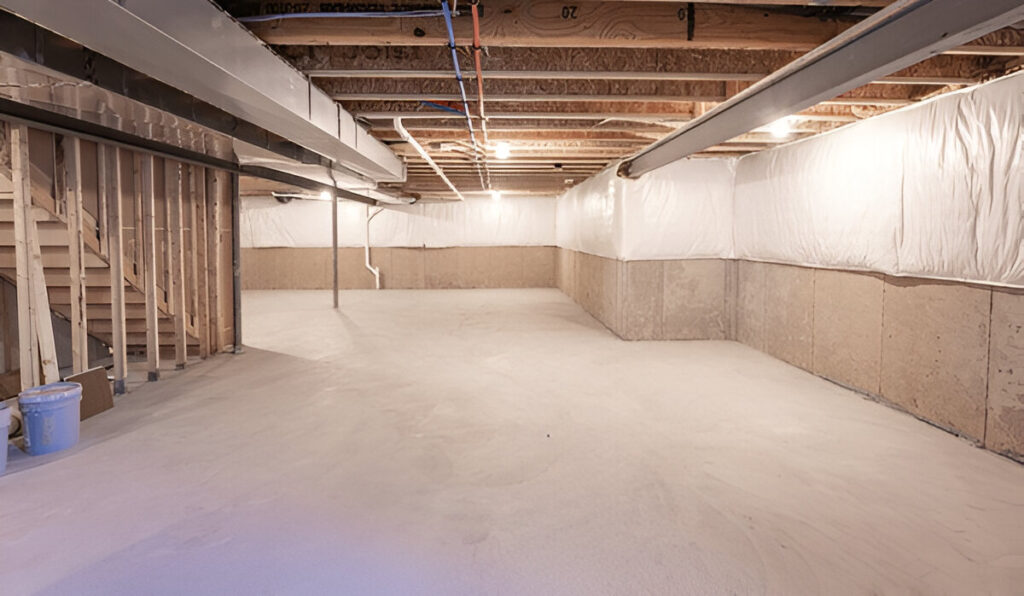
5. Regularly Inspect Your Home’s Foundation
Routine inspections help detect early warning signs of foundation water damage, preventing expensive repairs and structural issues.
What to Look for During Foundation Inspections:
- Check for Cracks:
- Inspect foundation walls and basement walls for hairline cracks, stair-step cracks, or horizontal cracks.
- If cracks widen over time, it’s time for a professional evaluation.
- Monitor Basement Moisture Levels:
- A musty smell or damp spots can indicate hidden leaks or condensation issues.
- Using a dehumidifier can help control moisture buildup.
- Examine Doors and Windows:
- Misaligned or sticking doors and windows may suggest foundation shifting due to water damage.
- Assess Soil and Drainage Conditions:
- After heavy rainfall, check if water pools near your foundation.
- Make adjustments to gutters, downspouts, and grading if necessary.
By conducting seasonal foundation inspections, homeowners can take preventative action before foundation water damage becomes a costly problem.
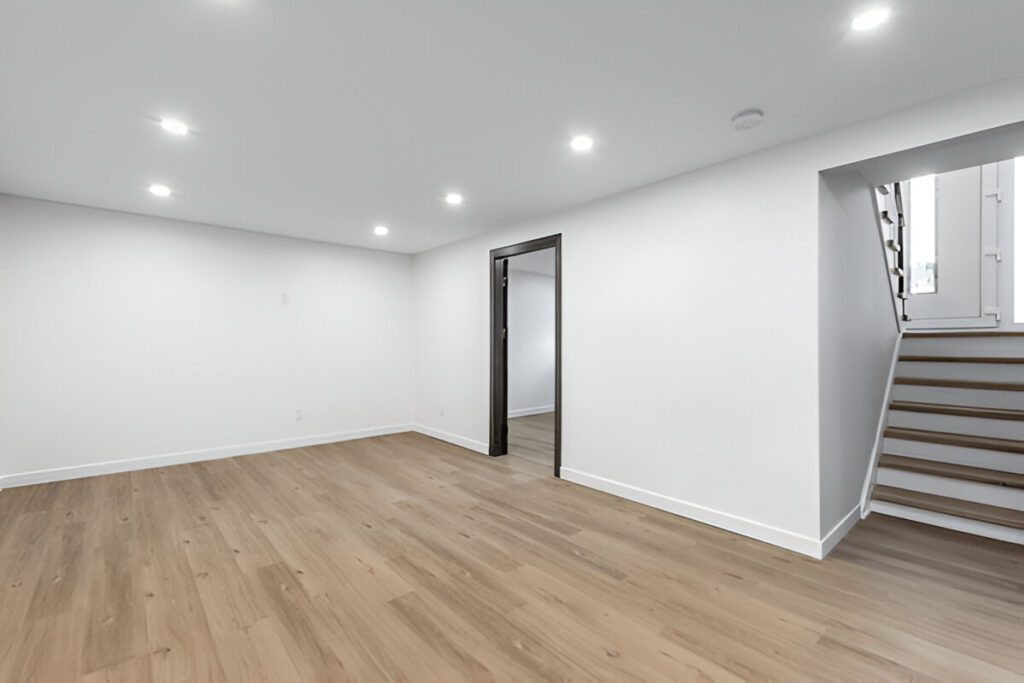
When to Call a Professional
While DIY solutions can help in minor cases, serious foundation issues require expert intervention. You should call a foundation repair specialist if you notice:
- Persistent basement flooding
- Large foundation cracks
- Doors and windows that won’t close properly
- Uneven or sagging floors
- Signs of structural failure
At DMW Waterproofing, we specialize in foundation repair, basement waterproofing, and structural restoration to keep your home safe from foundation water damage.
Ignoring foundation water damage can lead to serious structural issues and expensive repairs. By recognizing the warning signs early and implementing preventative measures, homeowners can protect their investments. If you suspect foundation damage, contact DMW Waterproofing today for a professional inspection and customized solutions.
FAQs
1. How can I tell if my foundation has water damage?
Look for foundation cracks, basement dampness, mold growth, and doors or windows that won’t close properly.
2. What is the best way to prevent water damage in a foundation?
Ensure proper drainage, install a sump pump, waterproof your basement, and inspect the foundation regularly.
3. Can foundation cracks be repaired?
Yes, minor cracks can be sealed with epoxy injections. However, larger structural cracks require professional foundation repair.
4. Will homeowners insurance cover foundation water damage?
Most policies do not cover gradual water damage but may cover sudden and accidental leaks. Check with your insurance provider.
5. How does a sump pump help prevent foundation damage?
A sump pump removes excess water from the basement, preventing it from weakening the foundation walls.
For expert foundation waterproofing and repair services, visit DMW Waterproofing and schedule a consultation today!

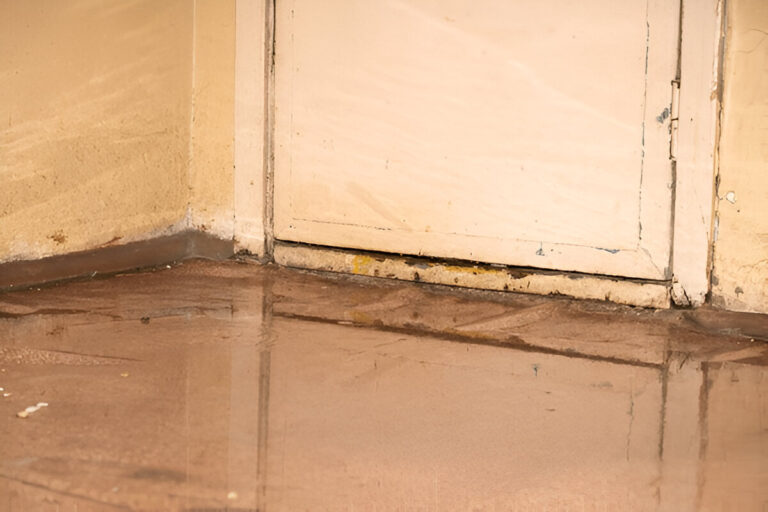
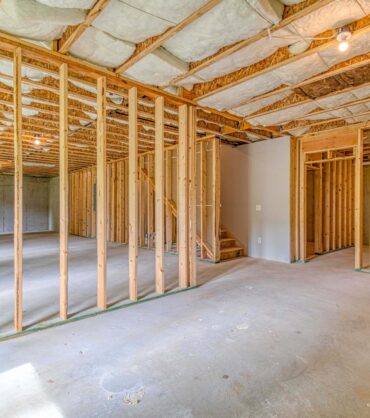
![[GetPaidStock.com]-680786795b816 [GetPaidStock.com]-680786795b816](https://dmvwp.com/wp-content/uploads/2025/04/GetPaidStock.com-680786795b816-370x418.jpg)
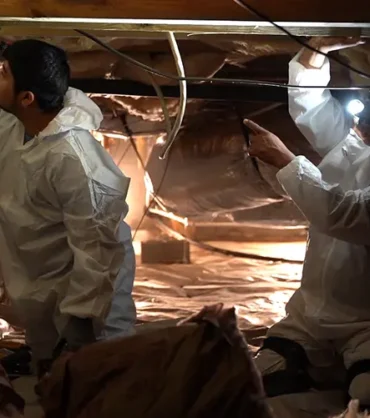
![[GetPaidStock.com]-682c400c87c15 [GetPaidStock.com]-682c400c87c15](https://dmvwp.com/wp-content/uploads/2025/04/GetPaidStock.com-682c400c87c15-370x418.jpg)
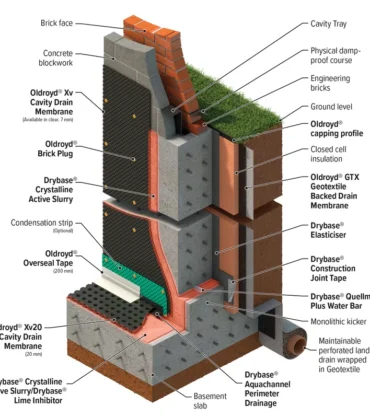
![[GetPaidStock.com]-682c413fa898e [GetPaidStock.com]-682c413fa898e](https://dmvwp.com/wp-content/uploads/2025/03/GetPaidStock.com-682c413fa898e-370x418.jpg)